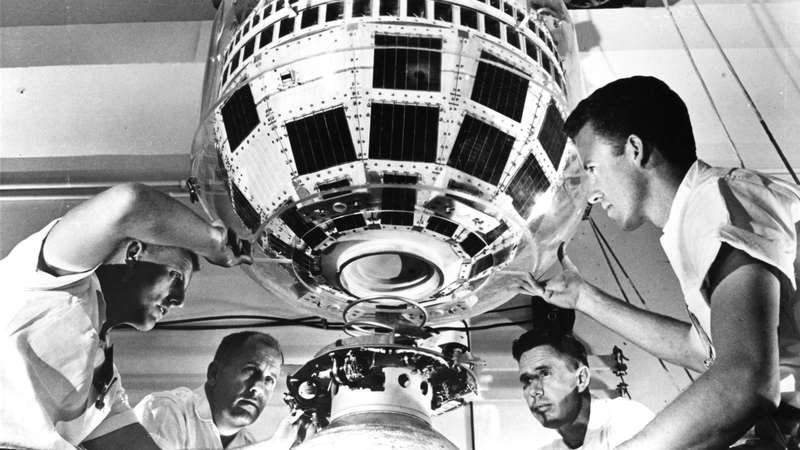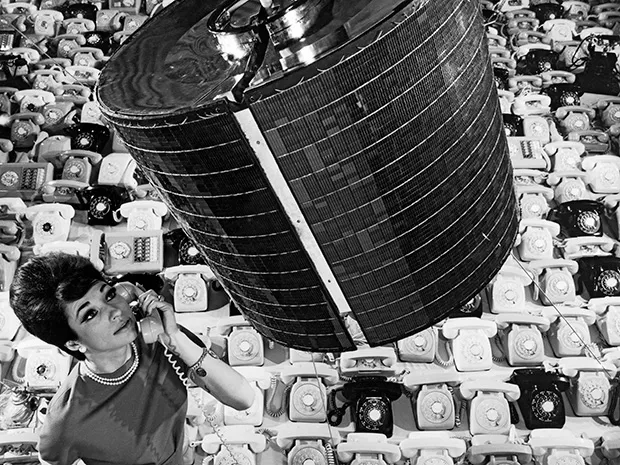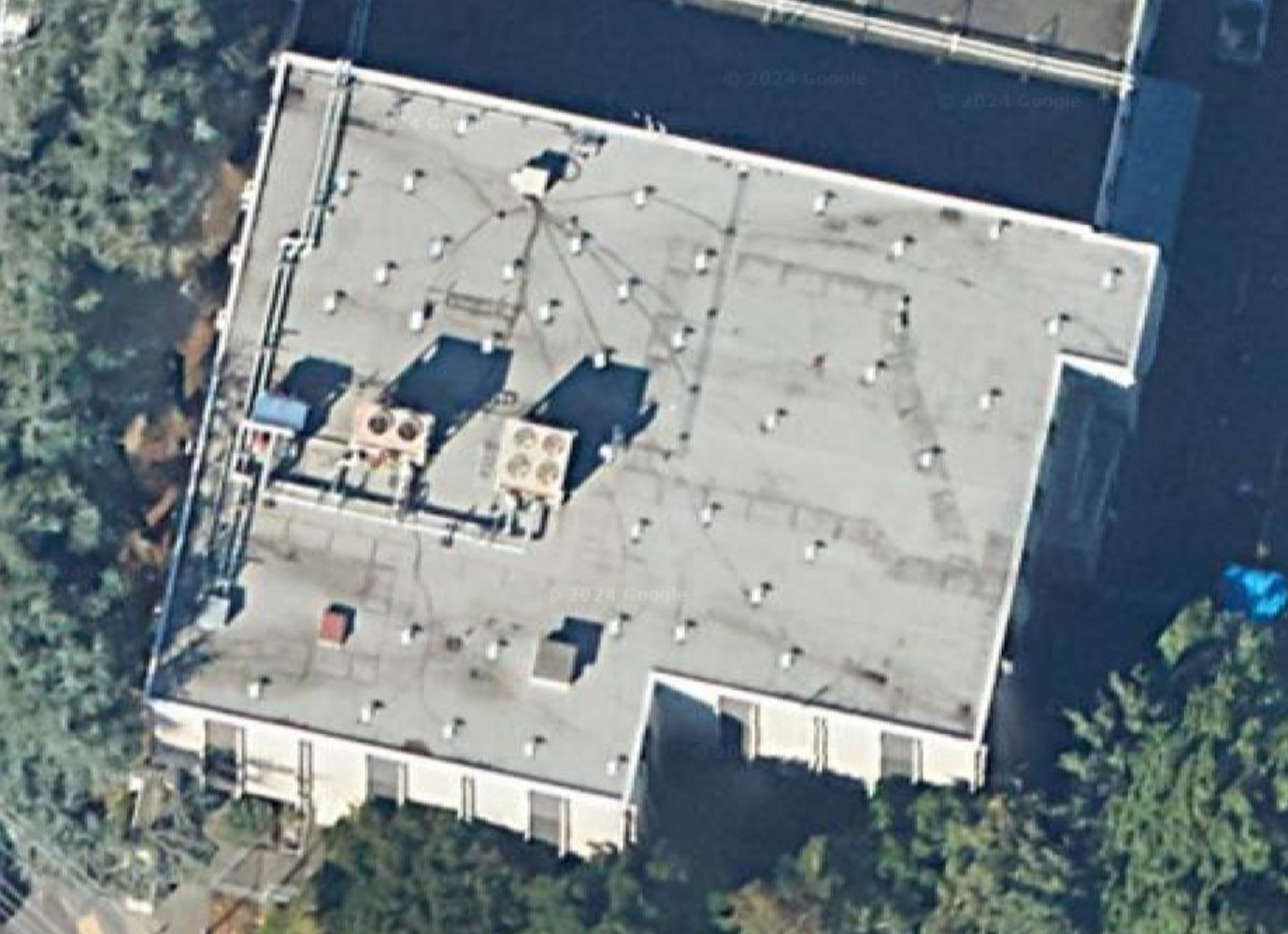Ouch! The 1960's
From This Is What Broadband Satellite Communication Looked Like in 1965
The Intelsat 1 “Early Bird” communications satellite, built by Hughes Aircraft Co., was able to relay 240 simultaneous phone conversations between Europe and North America. But having all 240 lines apparently originate in one room in Los Angeles, as this Hughes publicity shot seems to suggest, would undoubtedly have created a slight bottleneck.
I have read that in the early 1960's Telstar 1 and 2 were the first satellites to route long distance telephone calls.
I seem to remember that long, long ago, long distance (overseas?) phone calls did have noticeable latency and sometimes annoying echoes, and I suspect that this was due in part to the light time from Earth to a satellite and then back to Earth, and the echoes were because these were analog signals.
These days, long distance phone calls are generally routed through fiber optic cables, and I assume that ground telephone traffic if still relayed by satellite, would be digital.
Questions:
- When did they stop routing conventional analog telephone calls through satellites as analog signals as opposed to digitized data?
- At its peak, what was the volume of telephone traffic that was routed through satellites? It can be expressed either in total number of concurrent calls, or calls per year, whichever is easier to find.
note: I'm asking about calls made between conventional telephones, and not satellite phones.

Mounting Telstar Satellite to the Thor-Delta rocket 1962 (Source: Nokia Bell Labs and AT&T Archives)
Source: The First Active Orbiting Communications Satellite
Then, for the first time, live television transmissions and phone signals could be relayed between the US and Europe by means of this simple looking, spherical black and white satellite. Its iconic exterior held within it 170 pounds of some of the most complex electronics known to humankind. It featured 3,600 solar cells for power and a traveling-wave tube for amplifying the radio signals. Back in 1962, the key task of the Telstar 1 was to receive signals beamed from the USA, amplify them 10 billion times and rebroadcast them to live audiences in Europe, and vice versa. TV and telephone communication signals were relayed and boosted to get back down to Earth. The Telstar 1 circled the planet every two and half hours. It was only in the right position to beam transmissions between the USA and Europe for 20 minutes in each orbit before dropping out of contact. Future satellites were designed to work in tandem with each other, seamlessly passing the broadcast to keep transmission live at all times. At launch, the Telstar 1 facilitated over 400 telephone, facsimile and television transmissions.

